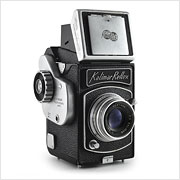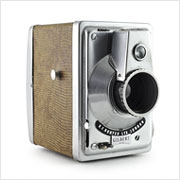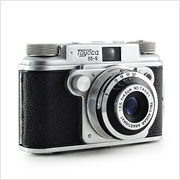Ricoh Ricohmatic 44
The Ricoh Ricohmatic 44 is a compact twin lens reflex camera designed by the Riken Optical Company (now Ricoh) for 4x4cm exposures on 127 film. Like several of its contemporaries, the Ricohmatic 44’s color schemes (aside from this example’s grey-blue on beige, the camera also came in dark grey on beige and creme on beige) deviate from the standard black and silver palette in favor of something a bit more playful to set it apart from its larger, more serious 6x6cm siblings.

























